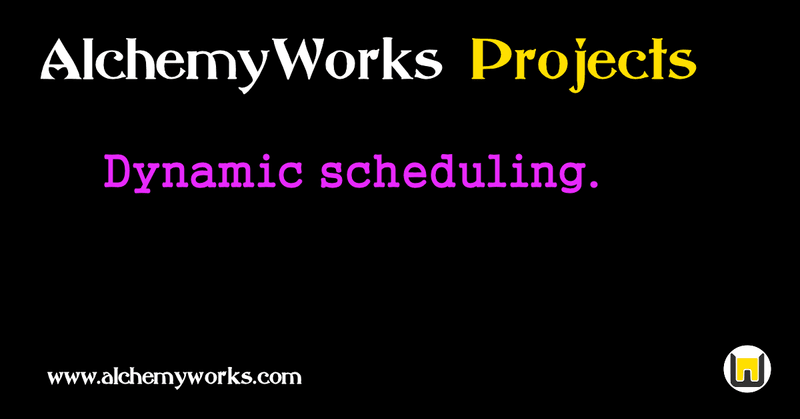
Occasionally on these pages we talk about dynamic projects scheduling, but what do we mean by that, and how does it differ from other project management mechanisms ?
Traditionally a project would start with a project manager drawing up a PID (Project Initiation Document) which detailed what the aim and drivers for the project were, what the desired outcomes are, who the stakeholders and affected parties are, the timescale and resources required, and most importantly how the project will be achieved. This would normally take the form of a phased approach with task allocations, dependencies and constraints, typically represented or augmented with a Gantt chart. Other documentation may include risk or change registers and organization charts. This gets distributed, kick-off meetings take place and we're off! It's now up to the project manager to keep on top of this with regular reviews, adjusting the plan as required, and keeping the stakeholders up to speed with status reports. The project manager is a lynchpin here, as they have an eagle-eye view of the whole project, and are a key factor in the project success.
Technology has contributed to the process, with chart drawing tools and scheduling software, the project manager is still a focus, but communication and administration is made easier. Alternate models such as agile methodologies with scum and sprints are now possible, the reviews are more frequent, and the structure if different, but there are tools to support it.
The danger with any approach though is that the plan becomes a write-only document. At regular intervals the project manager reviews and revises the plan before distributing it to the project team. It's considered, but may not be looked at again until the next review. In effect, the project plan becomes a mechanism for the project manager to keep track and document status.
With modern tools we can do better than this; the project plan can always be up to date, represent current status with the whole project team on the same page, and help drive the project forward pro-actively warning of any issues that may arise.
For example, as tasks are worked on by project members, they update the project management system with any time spent and the nature of the activity. The PM system can automatically slide tasks around the schedule based on remaining time outstanding, taking account of any holidays, fixed tasks or meetings in the diary. There are always tasks you need to fix to a time windows, say where resource needs booking, but there are many tasks that can float within the dependencies defined. The important thing is to be alerted when required activities will not be done in time, so that the project manager can re-prioritise, and revise the plan.
Time and costs are automatically accrued, so that the project manager can see at a glance how things are running against initial estimates. Just as important, the organization can see what the current situation is across the project portfolio, and see it realtime.
This is what we mean by dynamic scheduling, the system drives the activity, and alerts where the problems are, or are going to be. That doesn't absolve the project manager from running the project, and communication is still one of the most vital requirements for project success, but the tools can help the project manager to be more pro-active, assisting with the process, rather than just helping to document it.